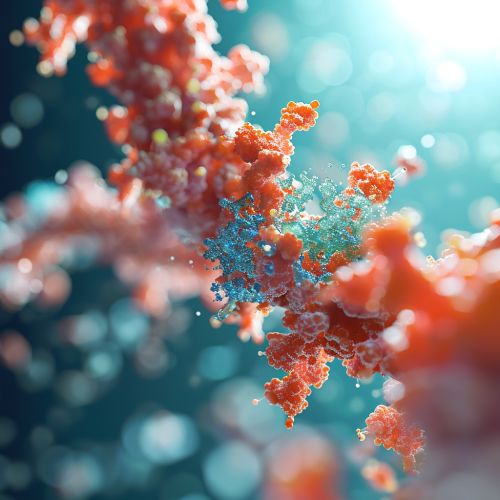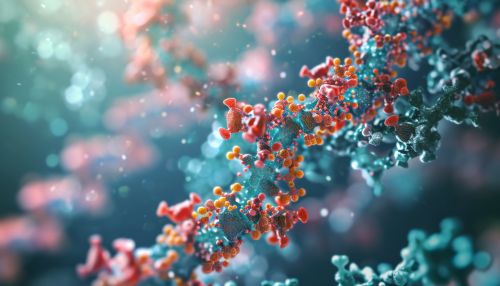Peptidase
Introduction
Peptidases, also known as proteases, proteinases, or proteolytic enzymes, are enzymes that perform proteolysis. This process involves the breakdown of proteins into their building blocks, amino acids, by cleaving the peptide bonds that link amino acids together in the polypeptide chain. They are a crucial component of many biological processes and have a wide range of applications in both the scientific and commercial sectors.
Classification
Peptidases can be classified into several categories based on their mechanism of action, their catalytic residue, or their evolutionary relationships. The MEROPS database, an online database of peptidases, currently recognizes six main classes of peptidases: serine, cysteine, aspartic, metallo, threonine, and glutamic peptidases.
Serine Peptidases
Serine peptidases are characterized by a catalytic triad of residues, usually serine, histidine, and aspartate. This class includes enzymes such as trypsin and chymotrypsin, which are involved in the digestion of dietary proteins.
Cysteine Peptidases
Cysteine peptidases have a cysteine residue as their active site and utilize a thiol group for their catalytic activity. Examples of this class include papain and calpain.
Aspartic Peptidases
Aspartic peptidases are characterized by the presence of two aspartic acid residues at their active site. They are involved in a variety of biological processes, including the coagulation cascade and the immune response.
Metallo Peptidases
Metallo peptidases require a metal ion, usually zinc, for their catalytic activity. They are involved in many biological processes, including cell signaling and protein turnover.
Threonine Peptidases
Threonine peptidases use a threonine residue as their active site. They are primarily found in the proteasome, a large protein complex involved in the degradation of unneeded or damaged proteins.
Glutamic Peptidases
Glutamic peptidases are a relatively new class of peptidases, characterized by the presence of a glutamic acid residue at their active site.
Biological Role
Peptidases play a vital role in numerous biological processes. They are involved in digestion, where they break down dietary proteins into amino acids that can be absorbed by the body. In the immune system, they help to process antigens for presentation to the immune cells. They also play a role in cell signaling, apoptosis (programmed cell death), and protein turnover.
Medical and Commercial Applications
Due to their ability to break down proteins, peptidases have a wide range of applications in medicine and industry. They are used in the production of cheese and beer, in the leather industry for dehairing hides, and in the food industry for tenderizing meat. In medicine, they are used in the treatment of various diseases and disorders, including cancer, inflammation, and infectious diseases.
See Also


